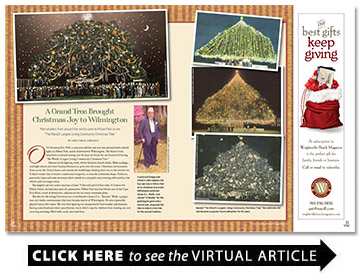A Grand Tree Brought Christmas Joy to Wilmington
Merrymakers from around the world came to Hilton Park to see “The World’s Largest Living Community Christmas Tree”
BY Christine R. Gonzalez
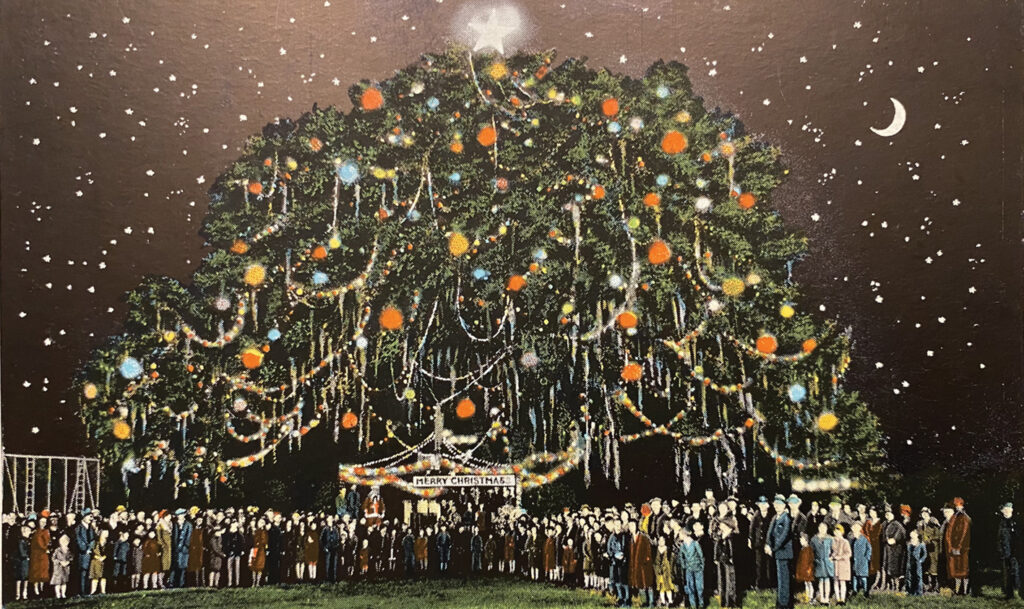
On Christmas Eve 1928, a centuries-old live oak tree was adorned with colored lights in Hilton Park, north of downtown Wilmington. The festive event launched a tradition lasting over 80 years in which the city boasted of having “The World’s Largest Living Community Christmas Tree.”
Interest in the lighting event, which featured church choirs, Bible readings, and high school and other band performances, grew over the years. Christmas merrymakers from across the United States and around the world began finding their way to the touted tree. It didn’t matter that it wasn’t a traditional evergreen, or even the traditional shape. Publicity, postcards, hype and some reverence drew crowds to a city park once teeming with activity, but which sadly no longer exists.
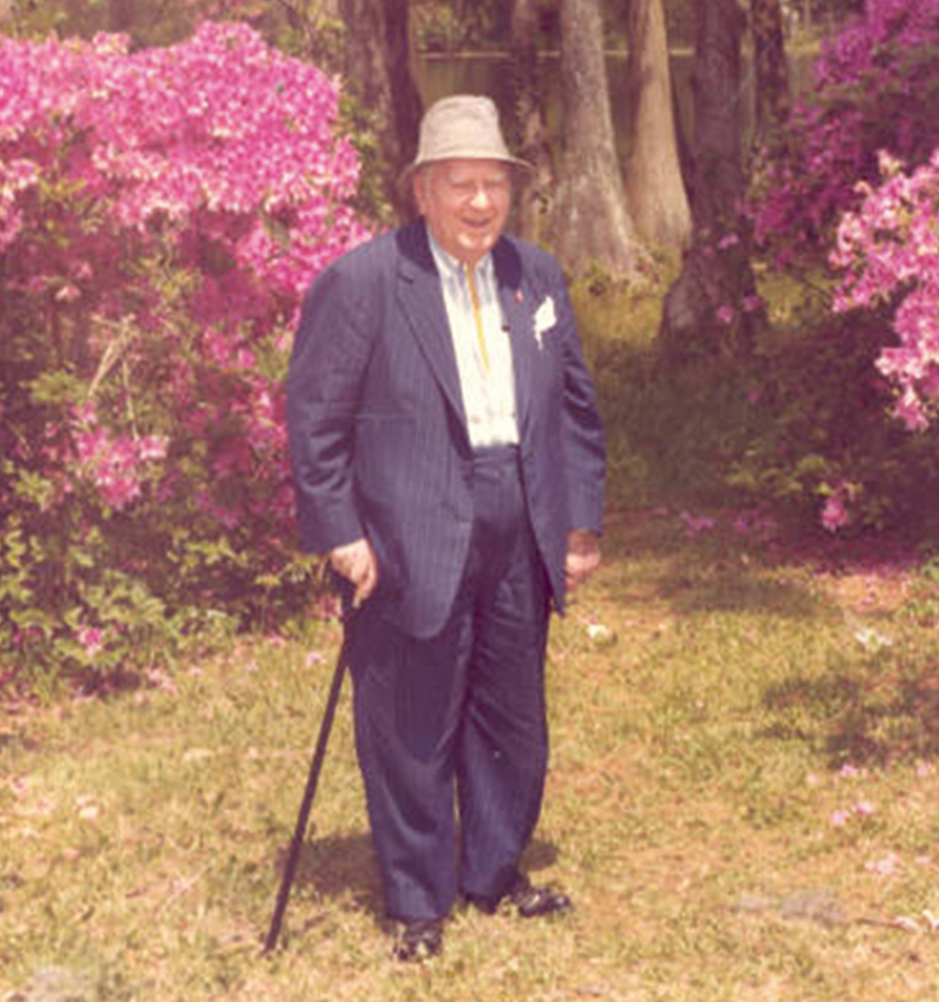
The mighty oak was said to measure at least 75 feet tall and 110 feet wide. It lived at 401 Hilton Street, on land once part of a plantation. Hilton Park was four blocks east of the Cape Fear River, north of downtown, adjacent to the city water treatment plant.
The idea for the living Christmas tree is attributed to James E.L. “Jimmie” Wade, a gregarious city works commissioner who later became mayor of Wilmington. He also reportedly played Santa a few times. The very first lighting was dampened by bad weather and illnesses, forcing some band and choir cancellations, but it didn’t stop the children from turning out and receiving stockings filled with candy, nuts and fruit.
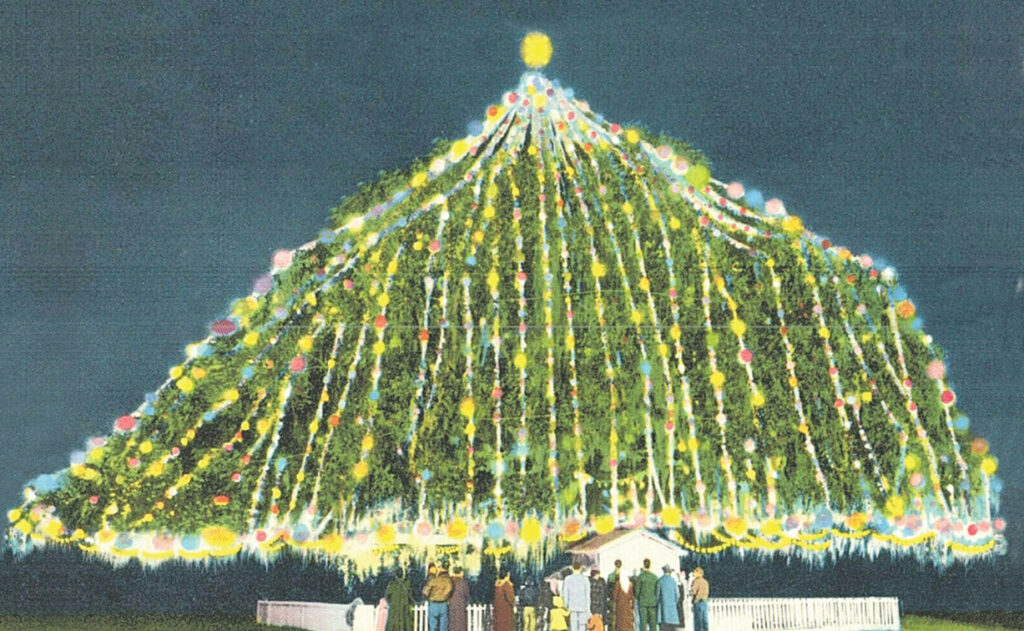
Many local sources describe the excitement of those early decades of the tree lighting. A University of North Carolina blog by Jack Hilliard on the photos of Hugh Morton paints a very reverential scene. Author Susan Taylor Block stated in that blog that she went to the tree many times in the ’50s and ’60s during the Christmas season.
“People spoke softly or not at all. I think there was zero yelling or clapping. There was a reverence under the tree and around it. … There was something happy and exhilarating about being there — but there also was a touch of something that made my hair stand on end, too,” Block wrote.
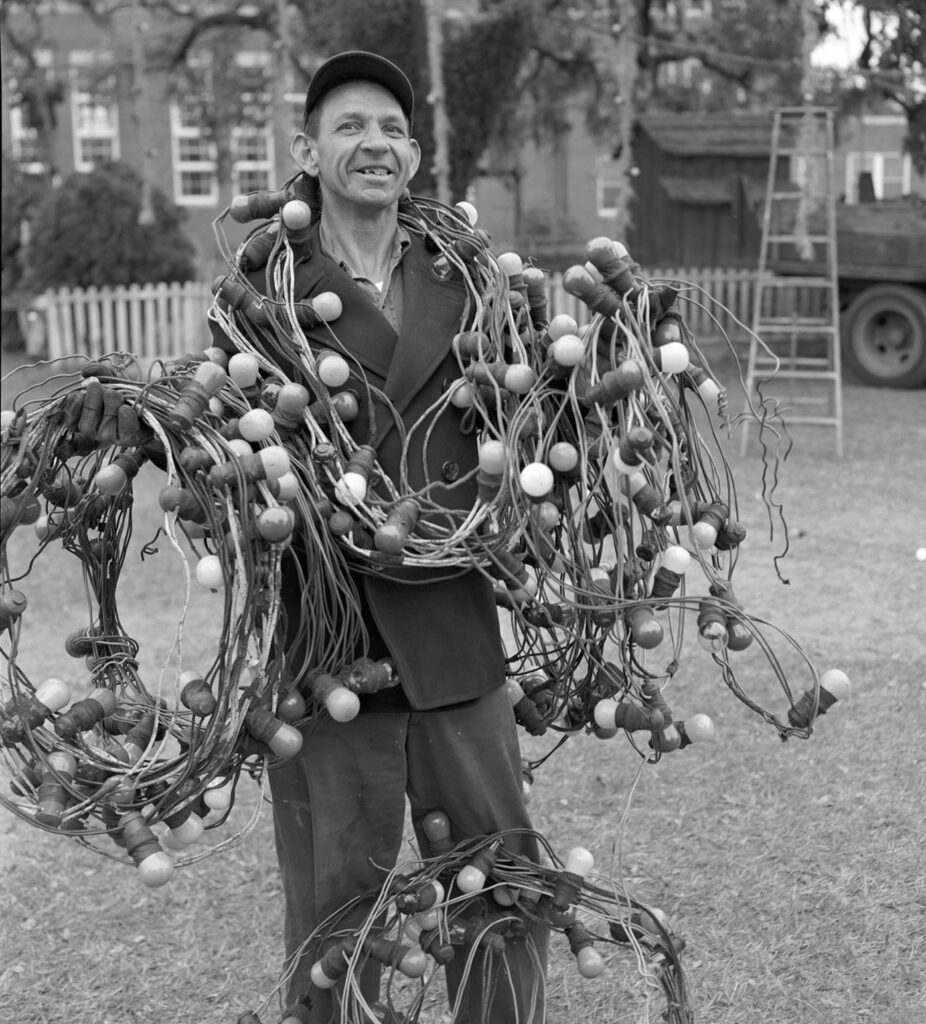
Reports state that at the tree’s height of popularity, around 1959, as many as 150,000 people came to the lighting ceremony. Visitors came from 42 states and 11 countries.
A 2007 WHQR news report stated that the oak was decorated with two miles of wire and 4,000 colorful lights.
After living a good, noble life of approximately 400 years, the tree succumbed to weather damage and age and was taken down by the city in November 2015. Its last lighting was 2009.
